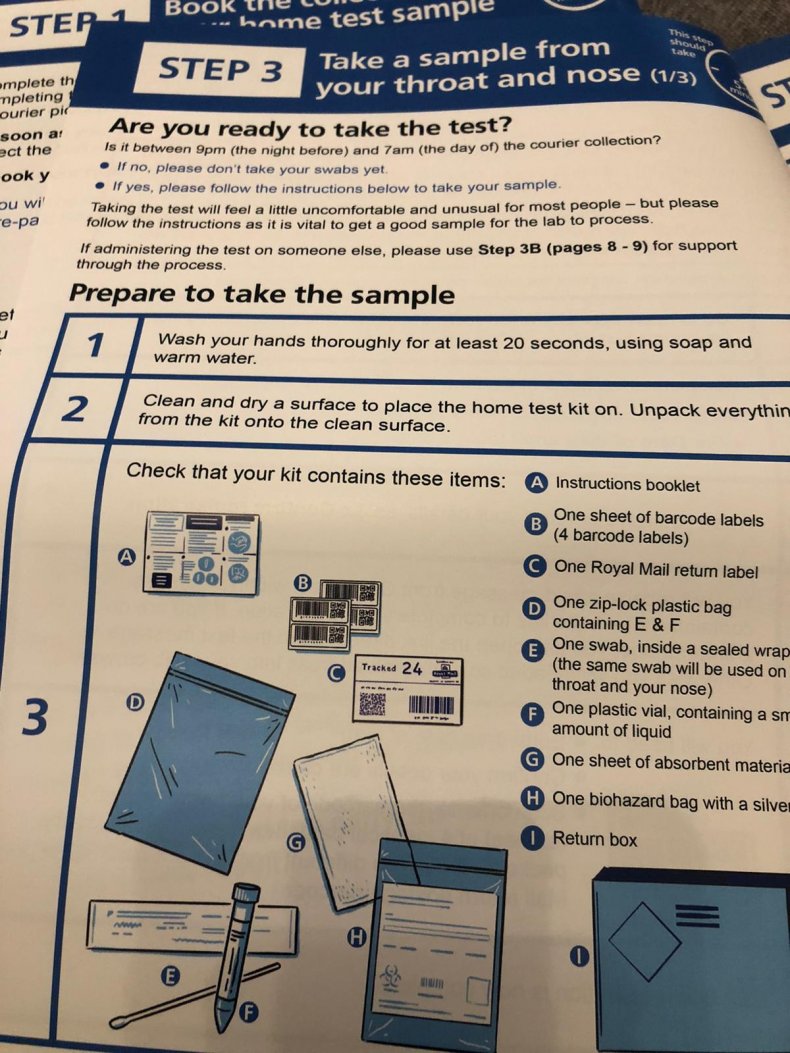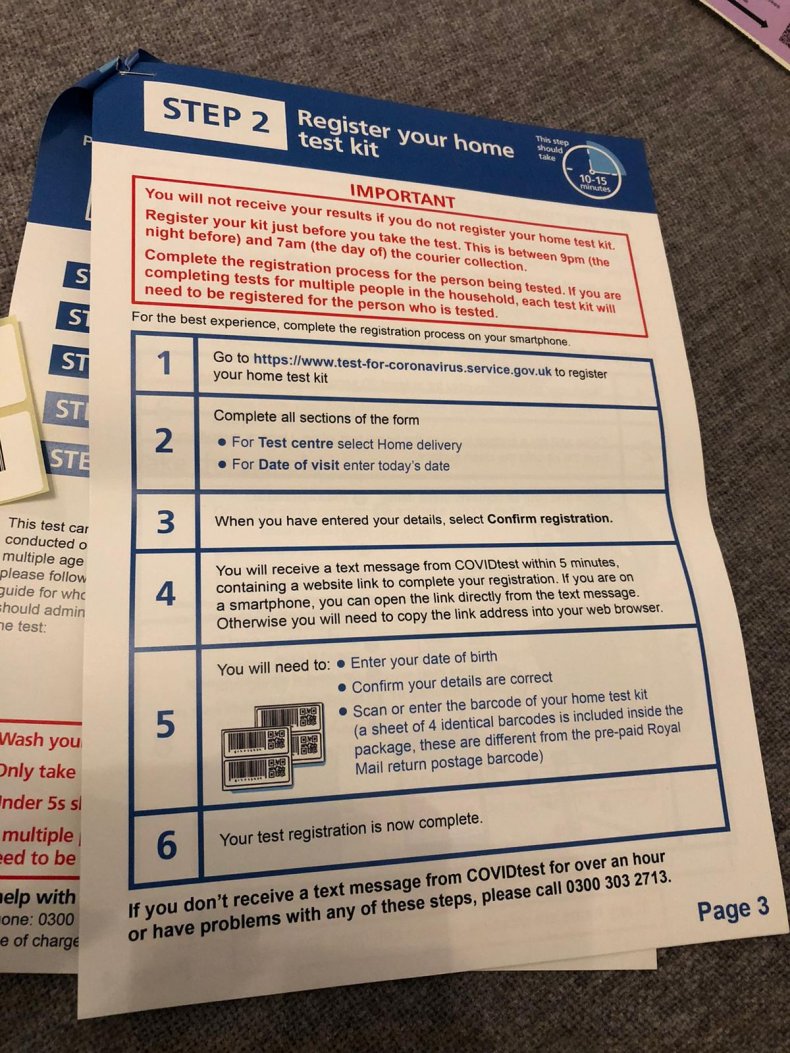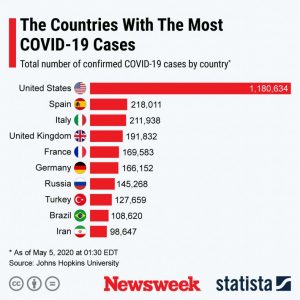The U.K. government set itself the goal of carrying out 100,000 COVID-19 tests a day by the end of April, a target it says it has met.
The government announced on April 30 that 122,347 tests had been provided across the U.K.
However, this figure also included home test kits which had been dispatched, but not yet processed.
Home test kits are being delivered across the country.
Since their arrival, people have started to complain about “incomplete” kits, “complicated” and “not very clear” instructions with some actually requiring a second test.
What is so complicated about the coronavirus testing kits?
In an instruction booklet that comes with the test, there are a total of five steps to be carried out, divided into a set of 24 instructions.
With timings on each page of the test, excluding steps four and five which include returning the sample to the courier and receiving results by text message, it is estimated that the entire process should take no more than 35 minutes.
Step 1 asks users to “book the collection of your home test sample” as soon as they receive it, which it estimates should take five to 10 minutes.
Step 2 requires you to “register your home testing kit”, which involves confirming details on a website and entering a barcode which is provided with the test. This step is estimated to take 15 minutes according to the booklet and can only be completed between “9pm (the night before) and 7am (the day of) the courier collection.
Step 3, which many individuals have described as the most challenging part of the test, involves taking the test using a swab which is estimated to take no longer than 10 minutes.
Users are instructed to wash their hands for 20 seconds, before unpacking the contents of the test, which includes an instruction booklet, one sheet of 4 barcode labels, a Royal Mail return label, a zip-lock plastic bag containing a swab and plastic vial with a sheet of absorbent material.
Also included is a biohazard bag and a return box in which the test is to be placed and sent back.
A number of people have already reported problems with missing pieces of equipment, including missing Royal Mail return labels without which the test cannot be registered for collection.
Sue_D said on Twitter: “I can’t return mine, as the address label is missing, helpline say oh dear request another test…. Requested first test Wednesday, came Friday night, now no home tests available….”
Once an individual is ready to take the test they are asked to label their plastic vial with a bar code, before swabbing the back of their throat for 10 seconds and carrying out a nasal swab for 10 seconds in each nostril with the same end.
The swab is then placed into a plastic vial, with the tip facing down and the other end of the swab snapped off, before the lid is put back on the vial and fastened.
Upon completion, the instructions state that the test should be placed inside a biohazard bag which is to be put inside the box provided along with a return label so a courier can collect it.
The booklet warns: “The test kits are time-sensitive and expire within 48 hours of the swab being taken.”
What do people think about the test?
Tomilade, a key worker who works in the social care sector, was sent a home testing kit which he said was “complicated” to follow.
He told Newsweek: “With all the information, the test took about an hour to complete”, which is almost double the suggested time.
He said: “The instructions are quite long, I feel that the entire process could have been broken down.
“It was very complicated at first. It took me a lot of time to sit down, to spread out the contents and know what to do.
“In the end for me it wasn’t too much of a problem, but for people who are not tech savvy, they might struggle.
“It took me a lot of time before I knew what to do.”
Tomilade also said that the video guide which people are sent in an email to watch on how to carry out the test, shows a slightly different kit to the one he had been sent.
Alan Wylie, who was given a test kit at a drive-in center says that the swabs should be carried out by people “who are medically trained.”
He said: “The instructions, when you first see them, look pretty complicated.”
 The kit should take less than 30 minutes to complete but some report it taking at least twice as long Newsweek
The kit should take less than 30 minutes to complete but some report it taking at least twice as long NewsweekAlan says he had to complete two tests after the first one came back without a definitive result and the instructions had also been changed between the two tests.
“I went to a drive-in center, you drive in, they check your QR code, (a barcode sent to those eligible after application) give you a test kit and you do the swab yourself.
“I had to do it twice. The first one came back not clear, the second one, they changed the instructions a little.
“They said you had to register the test kit to get results back, the first time we did it, they didn’t say that.”The verbal instructions were not very clear.”
Alan said that he was particularly worried for those people for whom English is not their first language or who have lower levels of English proficiency.
He said: “They should have people who are medically trained to do the swabbing.”
Alan said that initially, he did not expect to have to do the test himself.
He said: “The throat swab, you’re sat in a car, you really need to make sure you’re not touching your tongue and throat, it’s fairly difficult to do it properly and you don’t know if you’ve done it properly.”
The Department for Health has been contacted by Newsweek for comment.



















